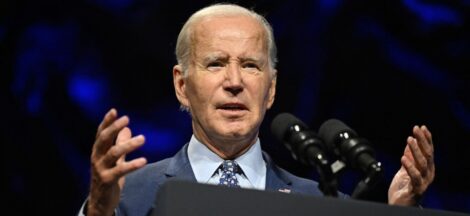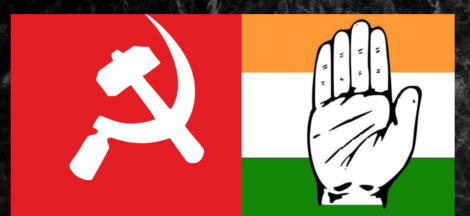By G. Srinivasan
The seventh review of China’s trade policies and practices held under the umbrella of the World Trade Organization (WTO) in Geneva on July 11 to 13 highlighted the Middle Kingdom’s growing clout and heft in the global economy ever since it became a member of the WTO way back in 2001. Being the world’s biggest merchandise trader and one of the larger recipients of foreign direct investment (FDI), its commercial engagement with the rest of the world counts a lot for the health and wealth of the world economy, particularly at a time when implacable insular elements and parochial protectionist policies hold sway in most of the advanced countries, led by the United States under the mercurial Donald Trump presidency.
More than the voluminous report made by the WTO Secretariat summing up the trade policies and practices of China, what draws attention to is the 22-page report China presented to WTO laying out its plan of actions, policies and its future work programmes in ample details. Without mincing words, Beijing claimed that since its accession to WTO and through continuous reform and opening up, it has established an economic and trade system in consonance with both “its national conditions and international prevailing rules and practices”. It boasted rather barefacedly that it is now the largest trading partner of over 120 countries and regions.
Reeling out statistics of how mighty its economic power is going to shape up in the foreseeable future, China said that in the next five years, it would “import eight trillion US dollars of goods, attract 600 billion dollars of foreign investment, invest 750 billion dollars overseas and have travel abroad of 700 million person-times”. In a country notoriously state-centric and official statistics need to be taken with a shovel of salt, even these figures, as claimed by China, would “provide countries and regions around the world with a bigger market, more capital, more products and more business opportunities”. With erstwhile foes and current friends joining Beijing in its ambitious Belt and Road Initiative and its infrastructure development bank, not to miss the happening things in the world when the quondam colossus West is on a pale shadow with its ageing population and anemic growth for years together, the audacious assertion of China of what it can do to help keep the wheels of the world economy not only moving but also bringing benefits to all stakeholders and partners is not to be sneered at.
Using the review exercise of the WTO to express its stark apprehensions and disapprobation of unilateralism and protectionism, China lauded WTO as “the multilateral trading system represented by WTO is one of the most important global governance mechanisms ever created by mankind and a strong and powerful constraint against unilateralism and protectionism”. It strongly reiterated that trade frictions and disputes should be addressed through dialogues, consultations and communications with mutual respect in accordance with the multilateral trading rules within the WTO framework.
Without directly naming US for its trade defence measures on aluminum and steel and other goods, China voiced its “grave concern over the unilateral and protectionist policies of an individual WTO member, which are openly in breach of the fundamental rules and spirit of the WTO and calls for the entire WTO membership to stand in solidarity and maintain vigilance and resistance”. How far New Delhi and other like-minded trading majors, including those let snarling by the American actions in Europe, band together in the WTO to press for action against the U.S would be keenly watched even as the U.S President has questioned the very rationale for the existence of the WTO in one of his tweets recently, provoking concerns everywhere? With the trade major US dragging its feet over the selection process for the Appellate Body of the WTO tasked with dispute settlement, China reminded that to ensure proper functioning of the Appellate Body of the WTO Dispute Settlement Mechanism is not only a common obligation of all WTO members, but also in the common interests of the entire WTO membership. It rightly cautioned that in view of the difficulties facing the multilateral trading system and the heavy dispute settlement workload, any further delay in starting the selection process of the Appellate Body members would undoubtedly “damage seriously the interests of the WTO and its membership”.
On the allegations against China that it doles out humongous subsidies to promote its exports in the global market, Beijing responded that the notification obligations under various WTO pacts applicable to China have been fulfilled. In the notification of subsidies, where information gleaning has long been a tremendous odd for China as the largest developing country, the officials claimed “positive progress”. While the notification used to cover only subsidies at the central government level, it now has local subsidies included. Next it is planned to cover all administrative regions at the provincial level, China told WTO.
Mapping out the way forward for itself, China said it would further ease market access for others. In manufacturing, China said it has basically opened up only with a small number of exceptions like automobiles, ships and aircraft. These exceptions are also now in a position to open wider. China would further ease foreign equity restrictions in these industries, automobiles in particular. In services, financial services in particular, China will accelerate the opening up of the insurance industry, relax restrictions on the establishment of foreign financial institutions in China, expand their business scope and broaden areas of cooperation between Chinese and foreign financial markets.
Secondly, China would continuously perfect investment milieu, strengthen alignment with international practices and increase further transparency. In 2018, China would complete revision of the negative list for foreign investment and implement across the board the management system of pre-establishment national treatment plus a negative list. Thirdly, China will continue to encourage normal technology exchanges and cooperation between Chinese and foreign enterprises and protect the lawful intellectual property rights of foreign firms. Finally, China would take the initiative to expand imports. In November 2018, the first China International Import Expo would open in Shanghai. China will also further markedly lower the import tariffs for vehicle and other products and import more to meet the needs of the Chinese people.
In fine, the WTO review of China has given a chance for the rest of the WTO members, including India ever bemoaning the burgeoning and big trade imbalance with the Middle Kingdom, to study Chinese short-term trade strategies to benefit by them. In the post-war prosperity powered by trade, thanks to the General Agreement on Trade & Tariffs (GATT) and its next avatar the WTO, the importance of emerging economies in the current century in shaping global commerce and its concomitant benefits can hardly be gainsaid. Hence the importance of China as it sets out to make a paradigm shift in its economic and commercial policies in what China claims that “it is closely linked with other countries and shares weal and woe in development”. (IPA Service)
The post China Flexes Its Muscle At WTO Review Meeting appeared first on Newspack by India Press Agency.


